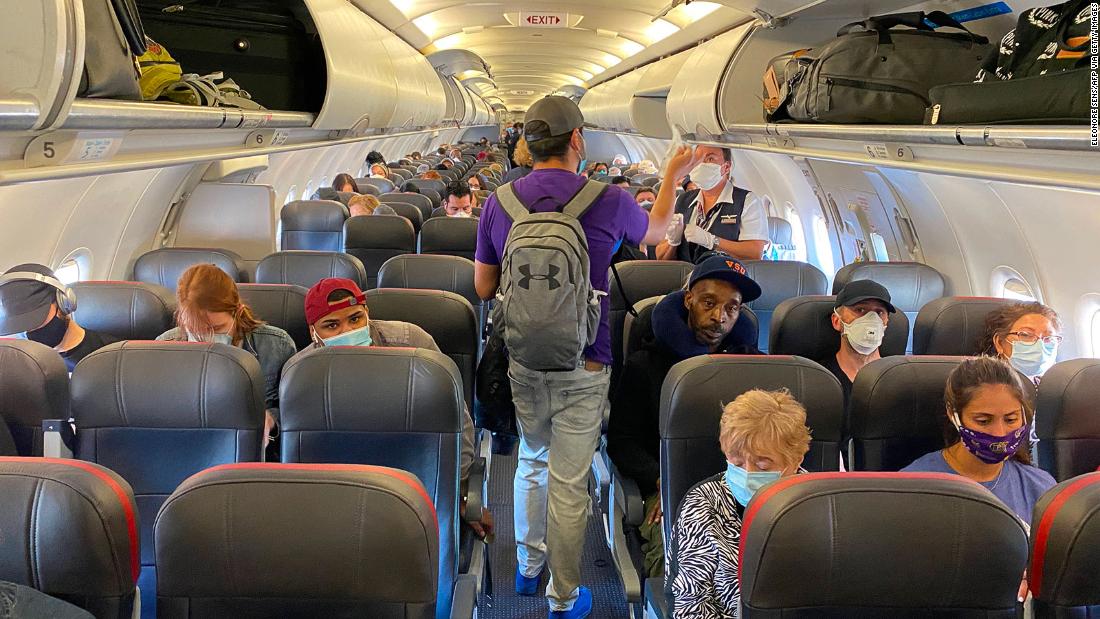You are here
The odds of catching Covid-19 on an airplane are slimmer than though, study suggests
Primary tabs
 The odds of catching Covid-19 on an airplane are slimmer than you think, scientists say According to a new study, the risk of contracting the virus on a full flight is just 1 in 4,300, and the odds lower to 1 in 7,700 if the airline is adopting the middle seat open policy. CNN
The odds of catching Covid-19 on an airplane are slimmer than you think, scientists say According to a new study, the risk of contracting the virus on a full flight is just 1 in 4,300, and the odds lower to 1 in 7,700 if the airline is adopting the middle seat open policy. CNN (CNN) — Sitting squeezed between a number of strangers on board an aircraft might feel like a risky position during these uncertain times.
But according to some experts who point to the very few documented cases of in-flight transmission, the chances of catching Covid-19 while on board a flight are actually relatively slim.
Fear of flying during the pandemic has drastically reduced global air traffic, which has also been restricted due to border closures. If new scientific claims are borne out, the perceived heightened risk of boarding an airplane could be unfounded.
In one case, about 328 passengers and crew members were tested for coronavirus after it was learned that a March 31 flight from the US to Taiwan had been carrying 12 passengers who were symptomatic at the time. However, all the other passengers tested negative, as did the crew members.
And while there have certainly been cases of infected passengers passing the virus on to an airplane's crew or fellow travelers in recent months, the transmission rates are low.
A study recently published in medical journal JAMA Network Open found evidence of the possible spread of coronavirus during a four-hour flight from Tel Aviv to Frankfurt in March.
Two passengers developed infections after flying with a group of tourists who had come into contact with an infected hotel manager and also became infected, according to researchers from the Institute for Medical Virology at Goethe University in Frankfurt. ...
An earlier flight from the UK to Vietnam on March 2, in which one passenger seemingly spread the virus to around 14 other passengers, as well as a crew member, is so far believed to be the only known on-board transmission to multiple people.
One explanation for the apparently low risk level is that the air in modern aircraft cabins is replaced with new fresh air every two to three minutes, and most planes are fitted with air filters designed to trap 99.99% of particles.
Meanwhile, various new protocols have been implemented, such as face-coverings for both passengers and crew, which is mandatory on most airlines, temperature screenings, as well as more intensive cabin cleaning and limited movement in the cabin during flight.
Arnold Barnett, a professor of statistics at the Massachusetts Institute of Technology's Sloan School of Management, tried to quantify the odds of becoming infected with the virus while on board a short flight in a recent study that looked at the benefits of the empty middle seat policy.
According to his findings, based on short haul flights in the US on aircraft configured with three seats on either side of the aisle, such as the Airbus 320 and the Boeing 737 -- and assuming everyone is wearing a mask -- the risk of catching the virus on a full flight is just 1 in 4,300. Those odds fall to 1 in 7,700 if the middle seat is vacant. ...



Recent Comments